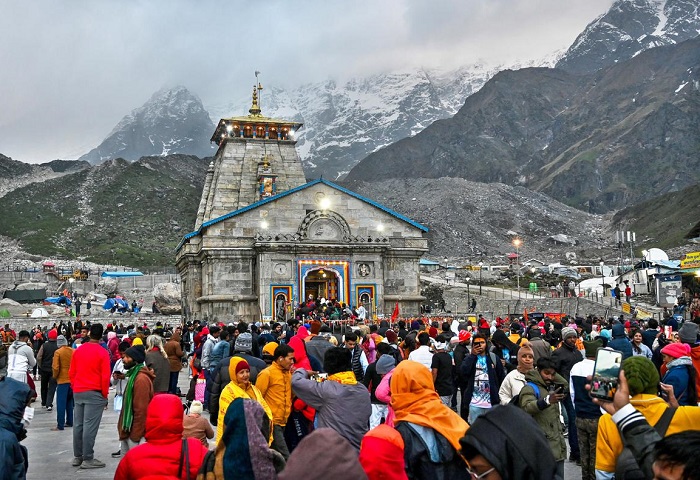How could it escape our minds and hearts - the havoc by the 2013 flash floods that devastated the magnificent Kedarnath, leaving it and the area around it in ruins. But soon after the calamity the reconstruction of damaged property and the tracks commenced and miraculously the main temple was almost intact after the disaster with only a few minor cracks. Gradually the debris was cleared out and the temple and the complex were restored to its former glory. What a beautiful piece of architecture-all built in the ashlar style of interlocking stone slabs into others without any application of cement or soil-Kedarnath stands as one of the twelve Jyotirlingas, the most divine shrines of Lord Shiva and also one of the four famous pilgrim sites collectively known as Chardham.
The main temple stands at a height of 11,755 feet, on the banks of Mandakini River. The term ‘Kedarnath’ is a derivative of ‘Kedar’ which, according to the mythological texts, refers to the place where Lord Shiva used to relieve sacred water from his matted hair. About the origin and the history of the place, it seems to have been constructed by the Pandavas to please the mighty Lord Shiva so that he could forgive their sin of killing their kin in the war of Kurukshetra. Several such stories entail the history of their ancient structure including that huge boulder that impeded the path of flash floods saving the main temple from devastation by the floods was later named Bhim Shila.
This religious and sacred site is not directly reachable by road, that’s why people are required to take a 22km long trek from Gaurikund. You can also board a train to Kedarnath from the nearest railway stations-Haridwar, Rishikesh, Kotdwar, or Dehradun. On the trip to Kedarnath, you would spot many beautiful sights such as Vasuki Tal Mountain Lake and many other shrines on the way. The temple remains cold throughout the year but still, there are few months to enjoy a warm and pleasant tour to this alluring store of peace and devotion.
Kedarnath in Summer Season (March to June)
The temperature of Kedarnath during the summer season usually ranges from 15 degrees to 25 degrees Celsius with an average temperature of 17 degrees Celsius. After the strident winters and the beautiful spring, it takes a turn into a pleasant and sunny climate in the summers. This season is most favored by tourists to visit Kedarnath through the blossoming valleys and high peaks of the Garhwal Himalayas. Besides the Darshan, people often take up other fun sports also such as trekking.
Kedarnath in Monsoon Season (July to September)
The monsoon season kicks in from July till the end of September and heavy rainfall is bestowed upon the high valleys of Kedarnath. The average temperature drops at 12 degrees Celsius and as it is regarded as a flood-prone area, the temple is closed down till the rains cease down and the problematic circumstances alleviate and the travel routes and facilities are revived. Another cause for this shutdown is the often-occurring landslides that are hazardous to the safety of the tourists. It is generally not advised to plan a holiday trip during this season due to the occasional rains and landslides.
Kedarnath in Winter Season (October to February)
After the monsoon showers dry up, the extremely cold winters strike the place and slowly the whole area is covered with a thick and white blanket of snow. October is the last month for tourists to visit Kedarnath after the travel routes are blocked and ardent weather conditions make the journey completely unfeasible. Hence the temple is shut down for six months until the spring comes up again and during this interval, Lord Kedarnath and the other temple deities are transferred to their winter home I.e. Ukhimath where they are accessible to the devotees for Darshan. They are relocated again in May when the temple opens up again on a date decided by the Head priest of the shrine. Many inhabitants leave the town before the beginning of winter, making it a ghost town, and the glorious shrine is closed down to be opened again in the beautiful summers.

Comments
Post a Comment